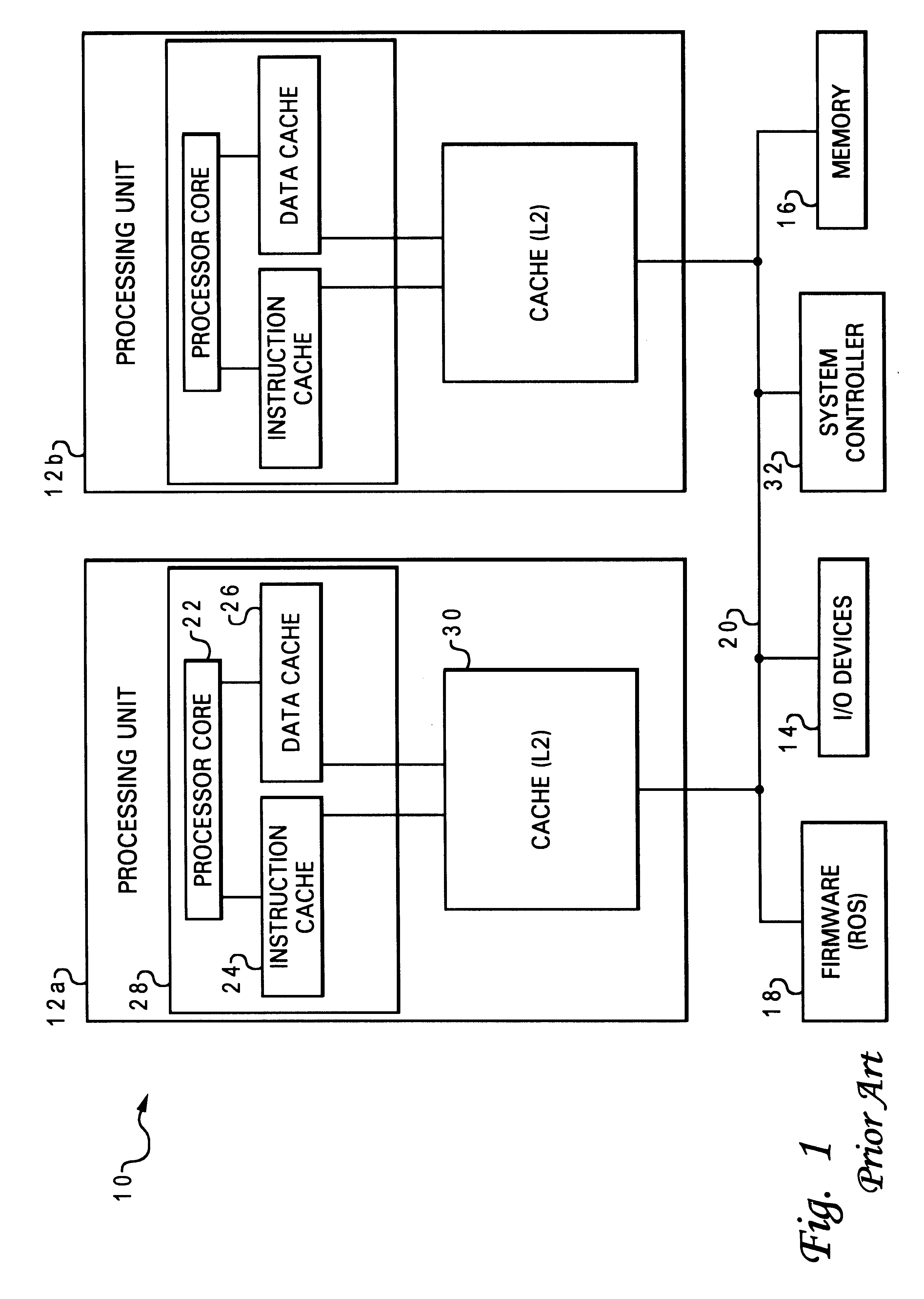Multiprocessor system in which a cache serving as a highest point of coherency is indicated by a snoop response
a multi-processor computer system and cache technology, applied in computing, memory adressing/allocation/relocation, instruments, etc., can solve the problems of processing elements that are easy to miss, increase the bus bandwidth, and improve the latency
- Summary
- Abstract
- Description
- Claims
- Application Information
AI Technical Summary
Problems solved by technology
Method used
Image
Examples
Embodiment Construction
With reference now to the FIG., and in particular with reference to FIG. 3, there is depicted one embodiment 40 of a multiprocessor computer system constructed in accordance with the present invention. Computer system 40 comprises a plurality of processor clusters 42a, 42b, 42c and 42d, and a distributed memory including mutually exclusive memory arrays 44a, 44b, 44c and 44d. Each memory array is associated with a respective processor cluster. The processor clusters are coupled using four switches 46a, 46b, 46c and 46d. Computer system 40 further includes a plurality of input / output (I / O) devices which are not shown for simplicity, that may be accessed via an interconnect bus connected to the switches. The present invention is directed to a method of handling cache operations in a memory-coherent, multiprocessor system such as the system of FIG. 4, but the present invention could be applied to computer systems that have additional hardware components not shown in FIG. 4, or having a...
PUM
 Login to View More
Login to View More Abstract
Description
Claims
Application Information
 Login to View More
Login to View More - R&D
- Intellectual Property
- Life Sciences
- Materials
- Tech Scout
- Unparalleled Data Quality
- Higher Quality Content
- 60% Fewer Hallucinations
Browse by: Latest US Patents, China's latest patents, Technical Efficacy Thesaurus, Application Domain, Technology Topic, Popular Technical Reports.
© 2025 PatSnap. All rights reserved.Legal|Privacy policy|Modern Slavery Act Transparency Statement|Sitemap|About US| Contact US: help@patsnap.com



